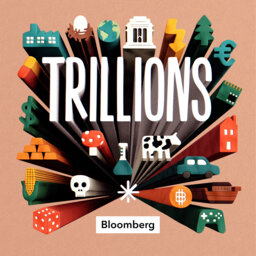The Rise of the Quick-Buck ETF
Derivatives-enhanced exchange-traded funds have become a hit with retail investors. There’s been more than 160 such launches so far this year, with monikers such as “laddered buffer” and “covered call,” and they’ve attracted $50 billion and counting. While many of the products were designed to protect from downturns, some include options that can generate cash, which comes back to investors in the form of dividends. (Did someone say “yields”?)
On this episode of Trillions, Eric Balchunas and Joel Weber speak with Denitsa Tsekova and Vildana Hajric, Bloomberg cross-asset reporters who wrote a recent feature story about this new retail boom. The group is also joined by Todd Akin, a retail trader behind the Unconventional Wealth Ideas YouTube channel and one of the characters in their story. They discuss why these ETFs have become so popular, how they work—and what the risks are.
 Trillions
Trillions


